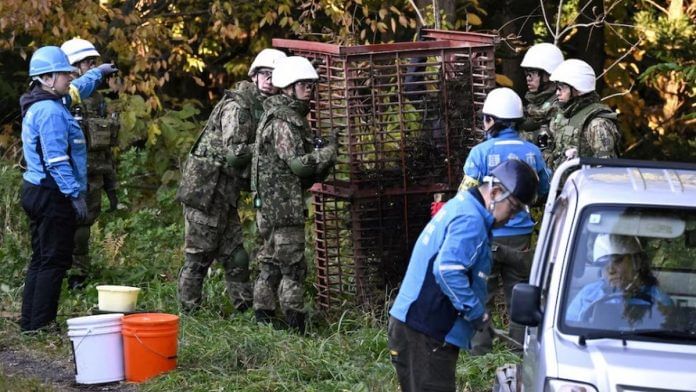New Delhi: There’ve been grisly attacks in villages, on walking trails, at a hot spring, and even in a supermarket. Now Japan has called in its military to tackle the bears apparently running riot in regions such as Akita and Iwate. Even its travel advisory now has a section dedicated to avoiding bears.
In what Japan Times has called a “record surge”, more than 100 people have been injured, and at least 12 killed since April. Bear sightings in the country crossed 20,000 this fiscal year, the highest-ever since tracking began in 2009.
On Thursday, Japan’s National Police Agency revised rules to allow officers to shoot bears that are seen in residential areas. AI surveillance cameras and drones that blast the sound of barking dogs and fireworks to scare bears away are also in play in places like Gifu prefecture.
One of those calling for a “ruthless response” is 68-year-old Japanese confectioner Keiji Minatoya, who was pinned down and mauled by a bear in 2023 in rural Kitaakita in northern Japan. It’s a sentiment shared by many as the attacks mount. But the reasons are also human-made, especially habitat loss and food shortages due to climate change. Japan’s demographics also have something to do with it.
Also Read: What is ‘brain-eating amoeba’, the outbreak causing panic in Kerala
Why is it happening?
After repeated attacks, Akita’s governor Kenta Suzuki requested the support of the army to help hunters set traps and tackle bears. Previously, troops were not allowed to cull bears but to only assist in capture and containment.
There is a seasonal aspect to the current spate of sightings and human-animal conflict.
In autumn, bears rely on acorns and beechnuts to build fat reserves before their winter hibernation—a feeding frenzy known as hyperphagia. Asian black bears are found in Tohoku, Chubu and Chugoku regions of Japan and brown bears in Hokkaido
But climate change, erratic weather, and deforestation have led to poor nut harvests, pushing bears out of forests and into villages in search of food.
Japan’s environment ministry has blamed this year’s poor acorn yield. It mirrors 2023, when attacks had also spiked.
What has also affected the response is Japan’s ageing population.
Officials are urging residents to harvest fruit and, where possible, cut down trees that attract bears. But in many rural areas, that’s become difficult. Most houses stand vacant as younger people move to cities, leaving behind elderly residents. Abandoned farms, overgrown orchards, and fruit-laden trees now create easy feeding grounds for bears wandering into villages.
Apart from this, the lack of trained manpower and hunters has led to what Akita Governor Kenta Suzuki has called a “desperate” situation.
In an Instagram post last month, he wrote: “The situation has already surpassed what the prefecture and municipalities can handle on their own, and exhaustion on the ground is reaching its limit.”
Also Read: Are Indian tigers getting aggressive? Answer lies in the numbers
Culling vs conservation
Even as anxieties are running high in Akita, a region famous for hot springs and forest treks, some groups have come out protesting against the expansion of culling and hunting.
Kumamori, a conservation group with 21,000 members, has urged the government to use non-lethal methods and restore habitats so that bears can return to the mountains. The Hokkaido Bear Research Society has also reportedly opposed the killing of bears except for “legitimate” hunting.
The population of black bears has tripled since 2012 due to conservation efforts. However, the species is still counted as vulnerable globally.
Meanwhile, the government insists action can’t wait.
“The lives and livelihoods of people are under threat,” said Japan’s defence minister Shinjiro Koizumi earlier this week.
(Edited by Asavari Singh)






